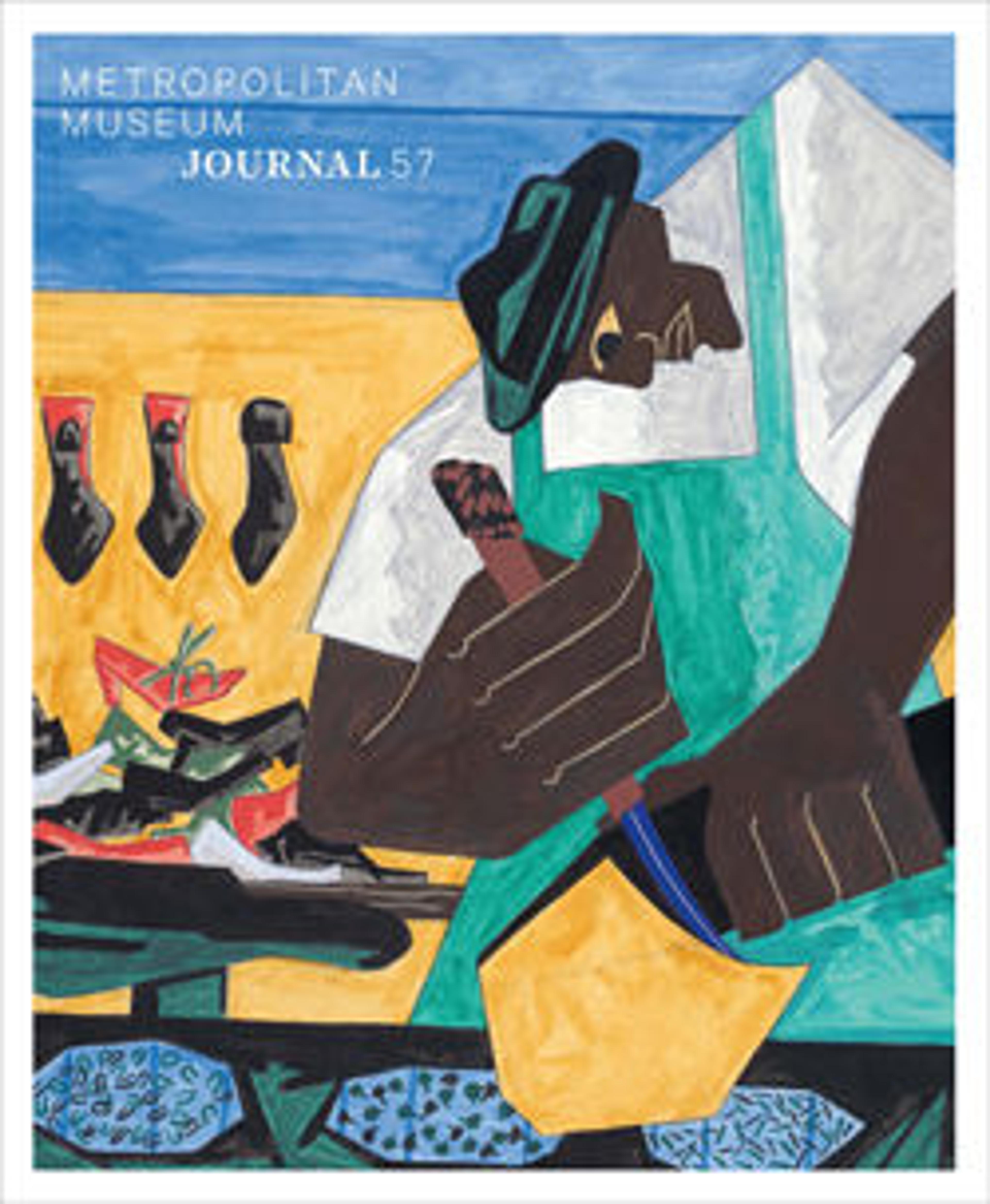English
Head of a ruler
The identity of this lifesize head and where it was created remain a mystery. The expert craftsmanship and innovative technology involved in shaping it and casting it in copper alloy, a very costly material, indicates that it represents a king or elite person. The nose, lips, large ears, heavy-lidded eyes, and modeling of the face are rendered in a naturalistic style. The dark, empty spaces of the eyes were probably originally inlaid with contrasting materials. Patterns in the elegantly coiffed beard and well-trimmed mustache and the curving and diagonal lines of the figure’s cloth turban can still be seen beneath the corroded copper surface. These aspects of personal appearance further support the identification of this image with an elite personage. Furthermore, the head’s unusually individualized features suggest that it might be a portrait. Were that to be true, the head would be a rare example of portraiture in ancient Near Eastern art.
Recent examination has revealed that the head, long thought to be virtually solid, originally contained a clay core held in place by metal supports. It may be among the earliest known examples of lifesize hollow casting in the lost-wax method. A plate across the neck incorporates a square peg originally set into a body or other mount, which may have been made of a different material.
Adapted from, Art of the Ancient Near East: A Resource for Educators (2010)
Recent examination has revealed that the head, long thought to be virtually solid, originally contained a clay core held in place by metal supports. It may be among the earliest known examples of lifesize hollow casting in the lost-wax method. A plate across the neck incorporates a square peg originally set into a body or other mount, which may have been made of a different material.
Adapted from, Art of the Ancient Near East: A Resource for Educators (2010)
Artwork Details
- Title:Head of a ruler
- Period:Early Bronze Age
- Date:ca. 2300–2000 BCE
- Geography:Mesopotamia
- Medium:Copper alloy
- Dimensions:13 9/16 × 8 3/8 × 9 3/16 in. (34.4 × 21.3 × 23.3 cm)
- Credit Line:Rogers Fund, 1947
- Object Number:47.100.80
- Curatorial Department: Ancient West Asian Art
Audio
7004. Head of a Ruler
0:00
0:00
We're sorry, the transcript for this audio track is not available at this time. Please email info@metmuseum.org to request a transcript for this track.
Listen to more about this artwork
More Artwork
Research Resources
The Met provides unparalleled resources for research and welcomes an international community of students and scholars. The Met's Open Access API is where creators and researchers can connect to the The Met collection. Open Access data and public domain images are available for unrestricted commercial and noncommercial use without permission or fee.
To request images under copyright and other restrictions, please use this Image Request form.
Feedback
We continue to research and examine historical and cultural context for objects in The Met collection. If you have comments or questions about this object record, please contact us using the form below. The Museum looks forward to receiving your comments.
